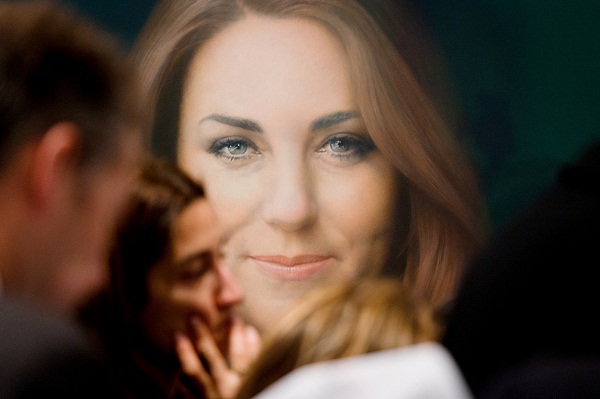Poor Kate Middleton. In the royal tradition of artistic and literary representation, what defines her at this moment in time? The creepy feature on her wardrobe statistics in February’s Vogue? Or Paul Emsley’s even creepier official portrait revealed last week?
Emsley’s Vaseline lens ‘Gaussian girl’ take on the future consort would have been appropriate had she the complexion of Doris Day, whose preference for the blurred lens was renowned. The fact we all know that Kate’s skin is like butter, her eyes sparkly, and demeanour jollier than her hockey stick makes her first official portrait instantly bewildering. Just imagine, though, if we didn’t know any of those things.
Traditionally, we have viewed royal portraits as spy-glasses into past monarchs’ characters. We look searchingly at a painting to discern clues about the sitter’s personality, which we assume worked its way naturally into the canvas. It’s a fair assumption insofar as portraiture normally requires sitter and artist to spend hours in one another’s company.
If we look at Kate’s portrait in the way we do Hans Holbein’s iconic portrait of Henry VIII, we might be inclined to see in her steely eyes and contorted mouth a hard and calculating woman who refused to emerge from behind a smoke screen. At present, there’s no adequate and parallel literary portrait to counter that picture. But even if there was, would a literary or artistic portrait be more persuasive?
Richard III makes an interesting case study. His literary and artistic portraits will soon be compared to the archaeological portrait afforded by the discovery of his skeleton in a Leicester car park last year (confirmation pending, but extremely likely). We’ll find that all three are drastically at odds.
The portrait of the late, medieval king that hangs, like Kate’s, in the National Portrait Gallery, is relatively sympathetic. His face is kind, and handsome. Until the skeleton with surprisingly mild curvature of the spine was found, posterity preferred to imagine him in the words of Thomas More and Shakespeare, who associated his outer appearance with his inner appearance, as sadly humans always have, and always will: ‘curtail’d of this fair proportion,/Cheated of feature by dissembling nature,/Deform’d, unfinish’d, sent before my time/Into this breathing world…’ Regardless of its chances at accuracy, the power of the literary portrait superseded the artistic portrait.
Fortunately for Kate, whose beauty will help protect her from any such slurs, a penetratingly powerful literary portrait – less biography than snapshot – to counter Emsley’s painting won’t be hard to produce.






Comments